#fossil stem
Explore tagged Tumblr posts
Photo

Stigmaria Fossil Stem Carboniferous Coal Measures Scotland UK | Musselburgh Plant Fossil with Certificate
This listing is for a beautifully preserved Stigmaria fossil stem, originating from the Carboniferous Period, specifically the Coal Measures of Musselburgh, near Edinburgh, Scotland, UK. This is a genuine piece of ancient plant life from approximately 310–300 million years ago, dating to the late Carboniferous (Pennsylvanian) sub-period.
The fossil shown in the photos is the exact specimen you will receive. It has been carefully selected for its distinct features and natural history significance, making it ideal for collectors, educators, and anyone interested in palaeobotany.
Geological & Palaeontological Details:
Fossil Type: Root/stem structure (rhizomorph) of an ancient lycopsid plant
Genus: Stigmaria (likely belonging to the root system of Lepidodendron or Sigillaria)
Order: Lepidodendrales
Geological Period: Carboniferous
Stage: Pennsylvanian (Westphalian)
Stratigraphy: Coal Measures (part of the Scottish Coal Measures Group)
Location: Musselburgh, Edinburgh, Scotland, UK
Depositional Environment: Low-lying equatorial swamp and floodplain environments where dense lycopod forests flourished. These environments formed the organic-rich layers that eventually transformed into coal seams.
Morphology & Features:
Stigmaria is characterised by a cylindrical, branching root structure with spirally arranged rootlet scars, forming the distinctive pitted pattern seen on the fossil’s surface
The preserved features show clear detail of the rootlet attachment points that supported anchorage in soft, waterlogged substrates
Typically preserved in grey shale or siltstone, reflecting anoxic burial conditions ideal for fossilisation
Provides key insights into the rooting systems of Carboniferous lycopod trees, the dominant flora of ancient coal-forming forests
Notability: Stigmaria fossils are among the most iconic plant fossils of the Carboniferous. Their distinct morphology and association with Lepidodendron and Sigillaria make them critical to understanding the ecology and evolution of the Earth’s earliest forested ecosystems. This specimen, from the historically significant coalfields near Musselburgh, represents a rare and regionally important find.
Additional Details:
All our fossils are 100% genuine specimens
Includes a Certificate of Authenticity
Photo shows the exact fossil for sale
Scale cube = 1cm – please refer to photos for precise sizing
Whether for education, research, or private display, this specimen offers a tangible connection to the lush primeval landscapes that once covered prehistoric Scotland. A perfect addition to any fossil or palaeobotanical collection.
#Stigmaria#plant fossil#Carboniferous fossil#Coal Measures#fossil stem#root fossil#Lepidodendron root#Musselburgh fossil#Edinburgh fossil#Scottish fossil#UK plant fossil#genuine fossil#fossil with certificate#fossil roots#Carboniferous flora#Stigmaria fossil stem#ancient plant fossil#fossilised roots#fossil collector specimen#Stigmaria rhizome
0 notes
Text
What can we learn from a dinosaur feather preserved in amber? Let’s go behind the scenes of the Museum’s collection of amber fossils to find out!
#science#amnh#museum#fossil#natural history#nature#animals#dinosaur#fact of the day#paleontology#did you know#natural history museum#museum of natural history#amber#cool animals#evolution#stem#insects#entomology#museum collections#ancient animals#prehistoric animals#dinosaurs
5K notes
·
View notes
Text
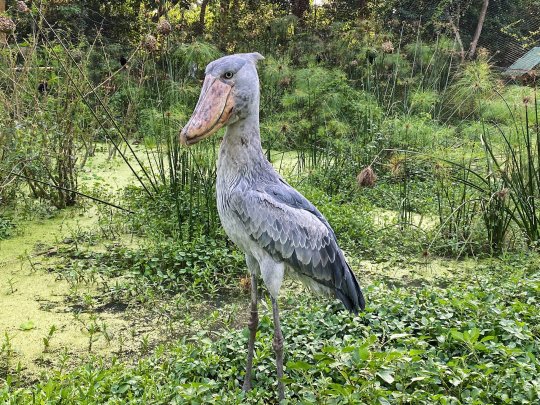
whenever i can't picture dinosaurs existing i just humble myself by looking at birds alive today. what the actual fuck is that thing
#just look into the eyes of flamingos and you can see the dinosaur#biology#science#stem#sciblr#paleontology#zoology#fossils#prehistoric#dinosaurs#earth science#geoscience#dinosaur#paleoblr#cretaceous#sauropod#geology#prehistoric animals#birds#birdblr
6K notes
·
View notes
Text
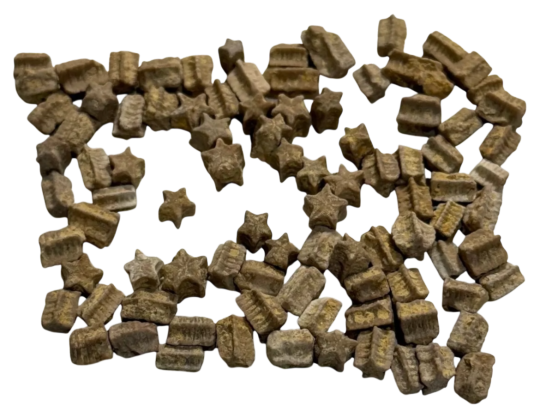
Star Crinoid Stem Fossils
#crinoid star fossil#star shape#crinoid#crinoids#fossil crinoid#fossil#fossils#multi#crinoid stem#png#transparent#ebay#paleontology#prehistoric#paleoblr
77 notes
·
View notes
Text
Contract preparation is now available!

Contract prep is the process of sending me a fossil that needs work and I send it back to you looking like it belongs in a museum. For examples of my work see my public portfolio here.
Services include but are not limited to:
matrix removal
consolidation
reconstruction/gap filling
polishing
aesthetic restoration
color correction/painting (only upon request)
- and anything else that's required or specifically requested by the client.
Pricing is on a case-by-case basis that depends on material costs, hours, and complexity. Rush fees are also on the table, but the sooner the deadline the higher the fee is. If you're on a budget we can work to set up a payment plan.
Availability is first come, first served. If you have questions please don't hesitate to ask!
#paleontology#palaeoblr#palaeontology#paleoblr#fossil#fossil prep#fossils#dinosaurs#art#stem#prehistoric#science#commissions open
110 notes
·
View notes
Text
Dustin Stewart has been obsessed with dinosaurs since he was nine years old. But he never dreamed he'd grow up to study 70-million-year-old footprints in Alaska. Scientists have found dinosaur tracks in the Denali National Park before, but never anything on this scale. Stewart, a paleontologist and graduate from the University of Alaska Fairbanks (UAF), says there are thousands of newly found prints crawling up vertical walls "like Spider-Man." "Seeing that for the first time, oh, we were on the next level. Unbelievable. Everyone was excited," he told As it Happens guest host Paul Hunter. "[They were like] 'Oh, my God, look at that one; look at that one.'"
Continue Reading.
277 notes
·
View notes
Text
Fossil Friday: Nuucichthys rhynchocephalus

Bet you've never heard of this little guy. That's because it's brand new to science! Nuucichthys was found in the Marjum Formation in Utah. It is a stem-vertebrate, which, if we recall from last month, means that it is just below vertebrate proper in the family tree.

It is characterized by a finless torpedo-shaped body that includes a snout-like anterior head bearing anterolateral eyes, approximately 25 thick myomeres, a large branchial chamber with a keel and approximately seven putative dorsal bars and a spiniform caudal process.
Curious to learn more? You can either check out the paper here:
And/or you can come to my tiktok channel on Sunday, December 8 and see a live discussion on it with me and some of my colleagues at 5pm MST.
This Sunday, December 1, my colleagues and I will be doing a discussion on the Homotherium cub found in Siberia that I talked about last week. Hope to see you there!
It will be posted on my Patreon later so if you can't make it, you can find it there!
#paleontology#fossils#science#science education#geology#new discoveries#stem vertebrate#chordates#chordata
15 notes
·
View notes
Text

Throwback to our very first, original Pridelobite pin. 🌈
Design inspired by the Cryptolithus genus with very long genial spines is so iconic and fun. We often got a comment that reminds people of the Star Trek comm badge, so it caused double excitement in Paleontology-loving Trekkies. 😁
As much as we loved prolonged spines combined with the roundness of the original design, we needed a design that can accommodate the Progress Pride Flag and more than six stripes.
💌Which Queerlobite pin design do you prefer? Let us know in the comments!
#Throwback Thursday#queer#stem#pride in STEM#queer in stem#sciart#science art#science pin#queer in science#LGBT in STEM#palaeontology#paleontology#Queer Scientist#Queer Science#trilobite#trilobite pin#triobite fossil#fossil pin#fossils#pride pin#enamel pin#queer pin#paleontology pin#palaeontology pin
20 notes
·
View notes
Text
#science#science communication#scicomm#stem#science education#science blog#palentology#Fossil#Dragon
20 notes
·
View notes
Text
Hasellia's rock collection 06.07.23

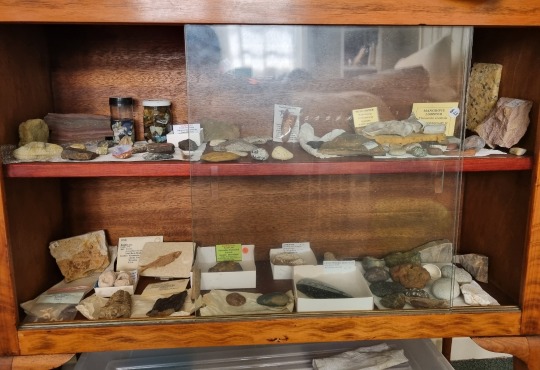

#rock collection#most of these are either from the beach or rock shows#excuse the junk on my cabinet#and reflections...#It was bright today and I've been wanting to upload my rocks for a while but it didn't really come out good oh well#geology#rocks#fossils#mud lobster#lobster#paleontology#Knightia#Knightia alta#Trilobite#crinoid stem#ammonite#Orthocone#Fossil cocoon#cocoon#shark teeth#Spinosaur#Spinosaur tooth#Sea urchin#Tetragramma violare#eucalypt leaf#fossil leaf#sedimentary rock#metamorphic rock#tigre iron
54 notes
·
View notes
Text

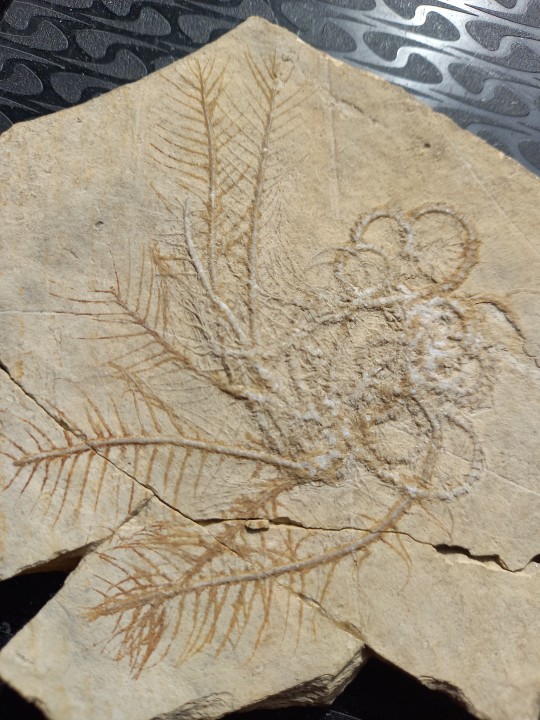
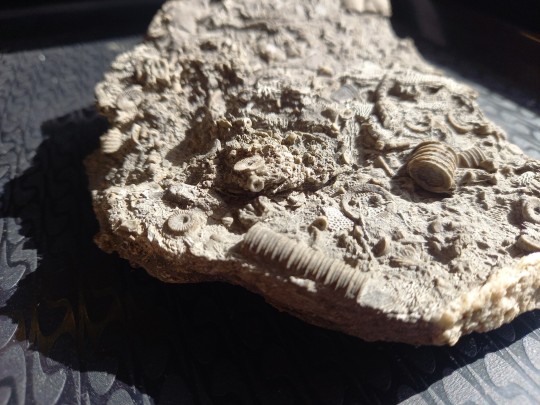
Fossil Time!
This year I'm branching out into many different streams of Geoscience - sustainability, resources, Palaeontology and of course, volcanology. I'm hoping this will let me explore all these exciting fields and maybe I'll do a masters in something I may have never considered!
The fossils are from the Jurassic period - click to see them in better quality. I think my favourite is the Crinoid which has the feathery frond-like appearance. The stacked circles (like coins) seen in the last photo are crinoid stems.
#geology#geoblr#palaeoblr#fossil#crinoid#studyblr#science#women in stem#earth science#rocks are cool
36 notes
·
View notes
Text
Research alert! A new study finds that an extremely well-preserved fossil of Triarthrus eatoni, a trilobite found in upstate New York, has an additional set of legs underneath its head! What did researchers learn from this discovery? Find out with Museum Curator Melanie Hopkins, who coauthored the research. Read more.
#science#amnh#museum#fossil#nature#natural history#animals#fact of the day#paleontology#did you know#trilobite#trilobite tuesday#research#new research#stem#women in stem#arthropods
1K notes
·
View notes
Text

#biology#sciblr#stem#science#paleontology#geology#geoscience#rocks#mineralogy#minerals#fossil#fossils#dinosaurs#dinosaur#paleoblr#prehistoric animals#prehistoric#earth science#triceratops#paleoart#paleomedia#dinos#stegosaurus
3K notes
·
View notes
Text
Megalocephalus pachycephalus

Megalocephalus was a genus of early tetrapod from the Late Carboniferous. Its type species is M. pachycephalus. Its second species is M. lineolatus. The known specimens of M. pachycephalus were found in multiple sites in England, Ireland, and Scotland; while M. lineolatus was found in a quarry in Ohio, U.S. Both species were discovered in the late 1800s and had much material referred to and from other genera quite frequently for several decades.
The genus name Megalocephalus means "big head," while pachycephalus means "thick head."
There was a third species named M. brevicornis in 1947 based on some original fossils referred to as "Pteroplax" brevicornis, however, the original holotype was poorly described and destroyed in a museum fire in 1909.
Megalocephalus is considered a member of Baphetidae, a small family of early tetrapod amphibians. It is not entirely clear how closely related the members of this family are due to some striking differences between them, but M. pachycephalus is closely related to sister taxon Kyrinion, more so than it is to M. lineolatus. Both species were large, estimated to reach upwards of 1.5m from head to tail. Like other baphetids, the skull had an elongation of the eye socket, which is thought to have been either a location for a salt gland or extra jaw muscle attachments. Its long, sharp teeth indicate it hunted fish.
Original paper: M. pachycephalus original description; M. lineolatus original description (referred to as Leptophractus)
Wikipedia article: https://en.wikipedia.org/wiki/Megalocephalus
#tetrapods#stem tetrapod#paleoart#paleontology#artwork#original art#human artist#megalocephalus#baphetidae#tetrapoda#obscure fossil tetrapods
7 notes
·
View notes
Text
A rugosa fossil found in the synclinorium of Namur (Belgium)
The whole thing meassures less than a centimeter across and I almost missed it when I picked up this particular rock. I was lucky for my geology professor who was right there and who spotted this tiny treasure.
(Found by me and identified by my geology professor on 12/5/2022)
(I’m still a bit jealous of this girl who found a three centimeter long trilobite fossil on this excursion… some people are just so damn lucky)



The rugosa or horn coral are an extinct order of colonial corals that were most abundant in the Middle Ordovician to Late Permian seas.
#science#geology#fossils#cool rocks#stemlearning#stemblr#stemeducation#stem studyblr#stem academia#stem aesthetic#stem student#biology#biology student#college#university#marine biology#coral
17 notes
·
View notes
